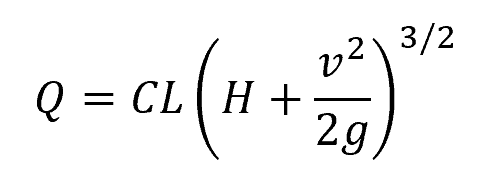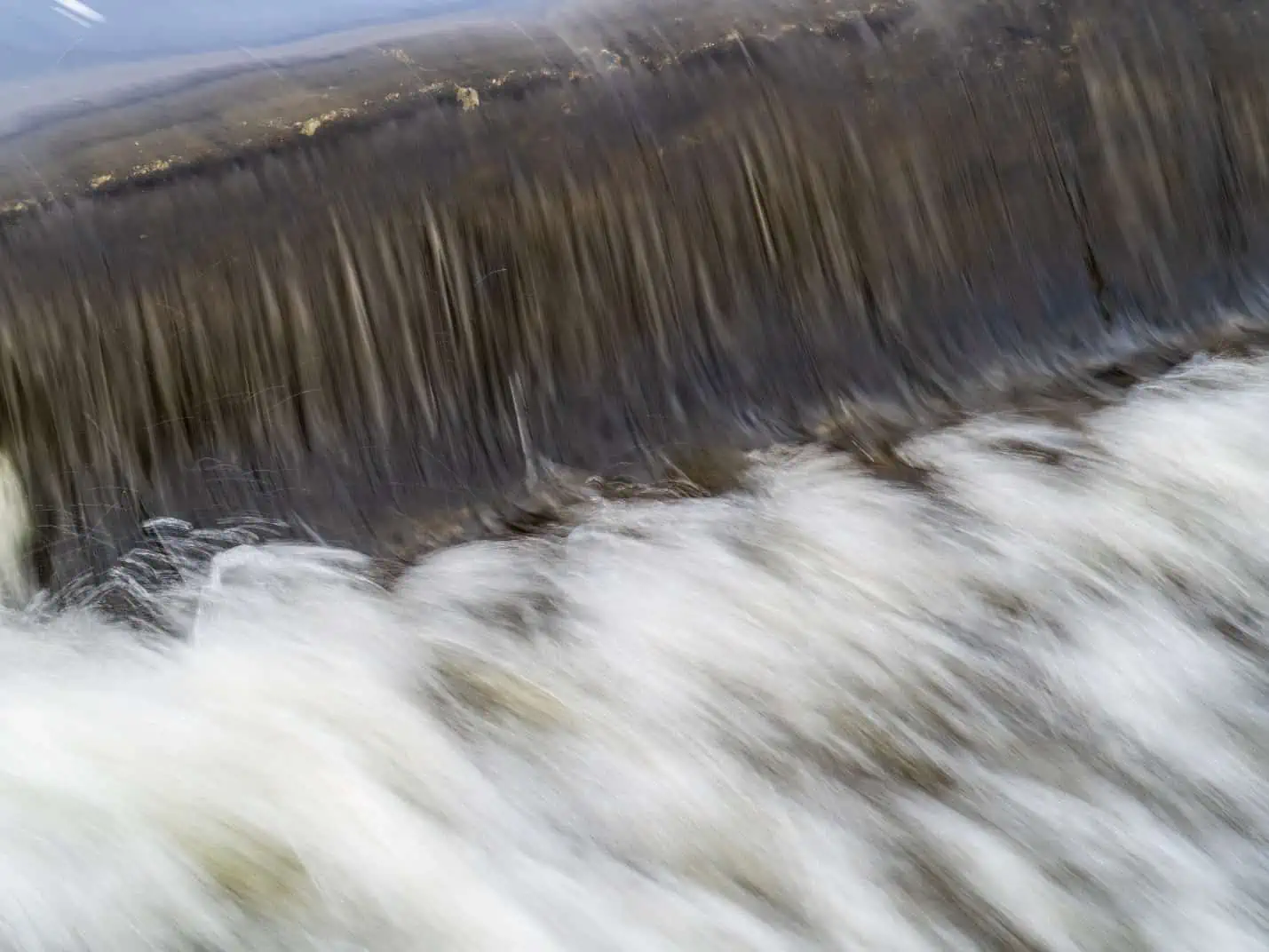Broad-crested weirs are structures used in hydraulic engineering to measure and control the flow of water in rivers and channels. They consist of a wide, flat crest that allows for a relatively uniform flow of water over the structure, enabling accurate measurement and regulation of water discharge.

In this article, we will discuss the design and function of broad-crested weirs, the equation for calculating their flow rate, design considerations, and a comparison with sharp-crested weirs.
What is a Broad-Crested Weir
A weir is a structure built across an open channel, such as a river or stream, to control the flow of water. They are commonly used in hydraulic engineering for various purposes, including regulating water levels, measuring discharge, preventing erosion, and managing sediment transport. They come in different shapes and sizes, each designed for specific hydraulic functions.
A broad-crested weir is a type of weir characterized by a long, horizontal crest that allows water to pass over it with relatively uniform and steady flow conditions, as shown in the diagram below.

Elevate Your Engineering With Excel
Advance in Excel with engineering-focused training that equips you with the skills to streamline projects and accelerate your career.

This design helps to dissipate energy more gradually as water flows over the weir, making them suitable for situations where the control of water flow needs to be more gradual and less abrupt. The shape and length of the crest typically depend on the intended application, but the crest is usually wider than the approaching channel width.
Unless otherwise noted, broad-crested weirs typically have vertical faces and sharp right-angled corners. However, it is important to note that there are also other configurations, such as broad-crested weirs with rounded edges.
Broad-Crested Weir Discharge Equation
The flow rate over a broad-crested weir can be calculated using the following equation:

Where:
- Q = flow rate [m³/s]
- C = discharge coefficient [unitless]
- L = effective width of weir crest [m]
- H = head difference between upstream water level and crest elevation [m]
The discharge coefficient (C) accounts for energy losses and flow disturbances. It depends on the weir geometry, channel shape, and flow conditions, and can be obtained from empirical relationships or calibration studies.
The table below shows the discharge coefficient values of typical broad-crested weirs at different heads and breadth of crest.
For broad-crested weirs with a rounded upstream corner, the discharge coefficient values are listed below.
In certain cases, considering the approach velocity is important when calculating the flow rate. The approach velocity refers to the average speed in the channel leading to the weir, measured 3Hw upstream from the weir. To determine the discharge, the velocity head is added to the measured head, as shown in the following equation:

Where:
- v = velocity of approach [m/s]
- g = acceleration due to gravity [9.81 m/s2]
Design Considerations
When designing a broad-crested weir, especially for flow measurement, certain conditions must be met to ensure accurate reading and depth control. First, there should be an adequate head difference (H) to establish critical flow.
The “head difference” (H) refers to the difference in water surface elevation upstream and downstream of the weir. It plays an important role in establishing critical flow, where the flow over the weir transitions from subcritical to supercritical. Critical flow is necessary for accurate flow measurement.
To ensure accurate readings, there should be enough head difference to create critical flow conditions. This typically involves adjusting the water level upstream or downstream of the weir to achieve the desired head difference.
The second condition is that the weir crest should have sufficient length to ensure uniform flow distribution. A sufficient length helps in spreading the flow evenly across the weir, preventing localized variations in velocity that could affect the accuracy of flow measurement. This ensures that the entire width of the weir contributes to the measurement.
Lastly, the weir crest should be aligned parallel to the flow direction. This is important to ensure that the flow passes smoothly over the crest without unnecessary turbulence or distortion.
Proper alignment helps maintain the specified geometry of the weir and prevents distortions in the flow pattern, which could lead to inaccurate readings. Any misalignment could cause the flow to deviate from the desired critical flow conditions.
Broad-Crested Weirs vs Sharp-Crested Weirs
Broad-crested weirs and sharp-crested weirs are two common types of weirs used for flow measurement in open channels. Although they share similarities in their purpose, their design and function have distinct differences that make them suitable for various applications.

Broad-Crested Weirs are characterized by their flat-crested, horizontal structure, with a length of the crest large enough when compared to the flow thickness. This design allows water to flow with minimum disturbance and is ideal for measuring discharge in large canals or rivers. These weirs are known for their advantages, such as easy installation and good performance at low heads, but they are also less accurate than their sharp-crested counterparts due to the potential for sediment buildup on the crest.
Sharp-Crested Weirs, on the other hand, are characterized by their thin, well-defined crest and are more widely used due to their higher accuracy. The crest is placed in the direction of water flow, making them suitable for measuring discharge from smaller rivers and channels. However, sharp-crested weirs have some drawbacks, such as difficulty in installation and the need for a more controlled flow to achieve accurate measurements.
Example Problem
Problem: A 2-meter wide broad-crested weir is used to measure the flow rate of a river. The weir has a head (H) of 1.5 meters and its crest has a breadth of 0.15 meters. Calculate the flow rate (Q) over the weir.
Solution:
From the table of discharge coefficients above, a broad-crested weir with a measured head of 1.5 meters and a crest with a breadth of 0.15 meters would have a discharge coefficient equal to 1.83. Then we can use the following equation to determine the flow rate:

Therefore, the flow rate over the weir is 6.72 cubic meters per second.
